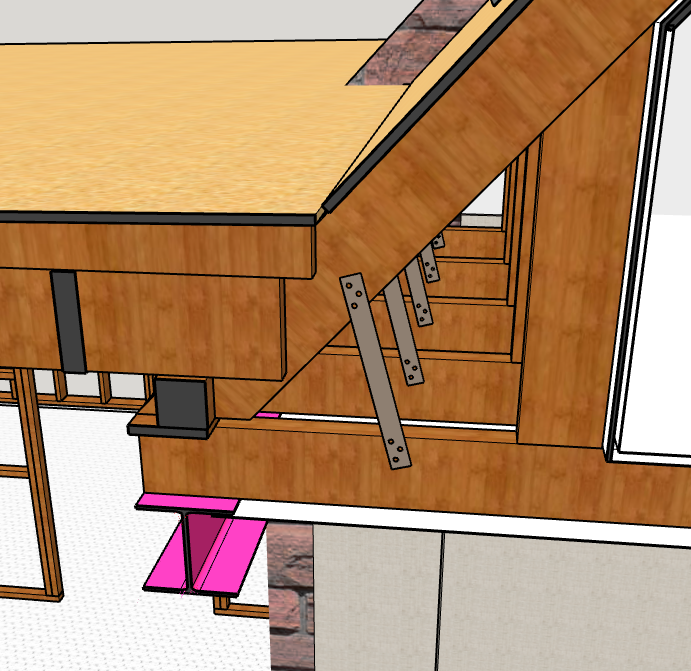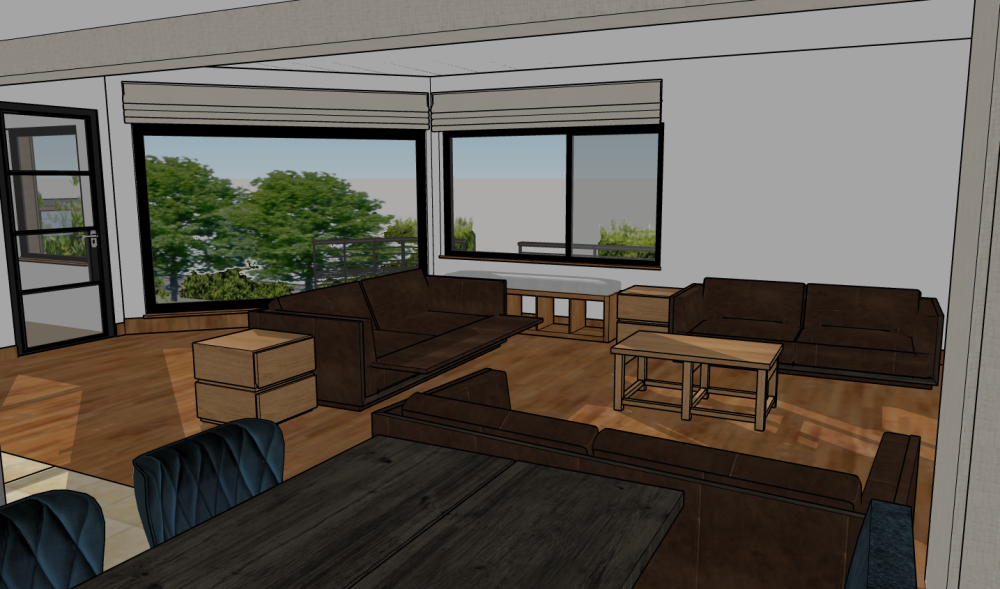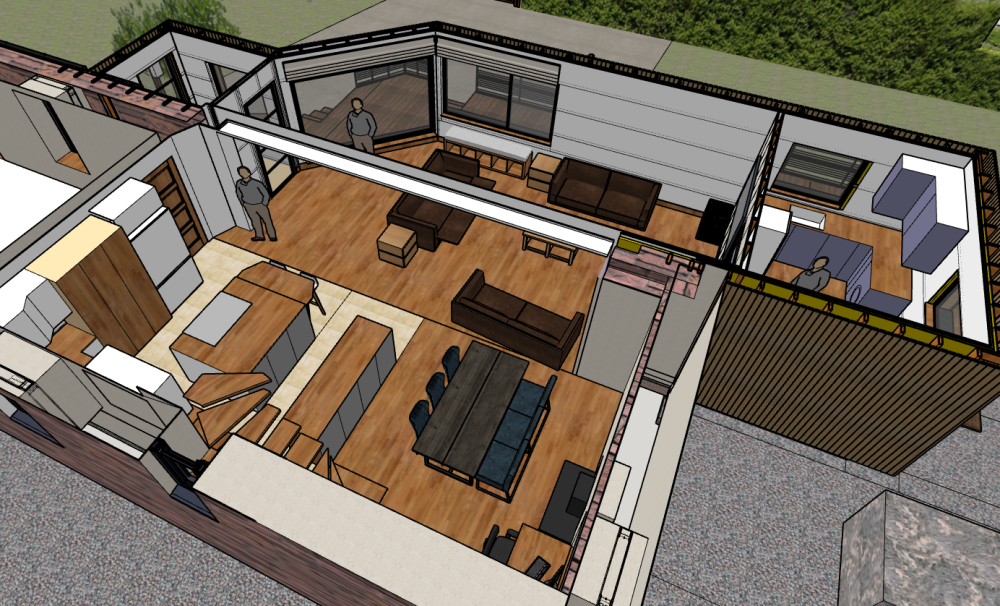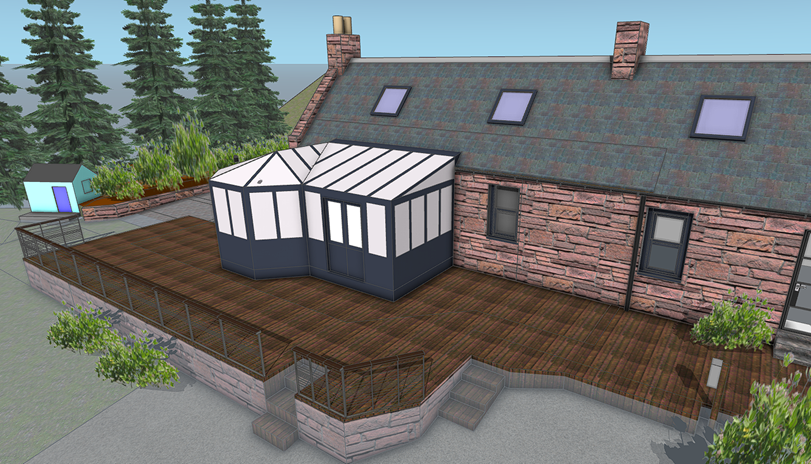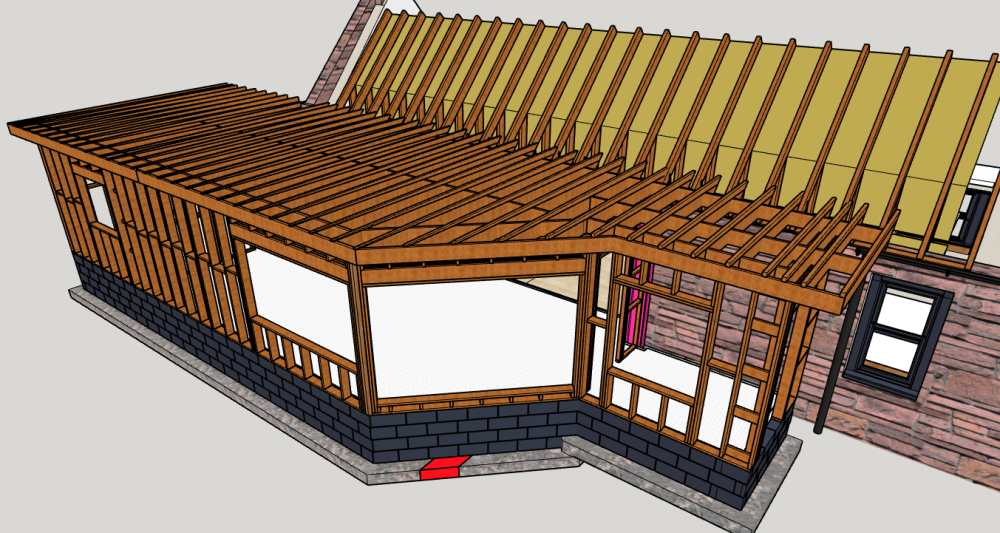-
Posts
49 -
Joined
-
Last visited
Everything posted by nwnw
-
So 10ltr/s yearly average is too high. What's your best guess?
-
That's always the tricky bit isn't it. Chats, word of mouth, etc, but still a bit of a minefield. No doubt I'll have a good chat with the SE first so I kind of know what I'm talking about!
-
In case folks did not see it in my other thread...my SE also suggested moving the beam to under the existing joists. So it now looks like this... Not great as there will be a concealed beam in the ceiling space (doesn't actually look that bad). It does however make the build much easier, especially as the old timbers are likely at different lengths.
-
Interesting. The SE will detail the underpinning, but they were very much deferring to the contractor for the installation - and recommending I get someone that really knows what they are doing. Foundations are shown in the attached. I'll add some fancy x-sections at some point. I still need a good Sketchup plugin for that. Detail01-Wall - Rev3.pdf
-
@Crofter, did you look at some of the drawings I attached earlier? I use Sketchup and Sketchup Layout. You basically create a scene in Sketchup then import the scene into a layout view. The scenes can have any sort of x-section and view style. Any changes you do in Sketchup get reflected in the Layout view. You can add dimensions, notes, annotations - you just need to be careful not to change the zoom scale of the scene once created. Also, as mentioned earlier, you need to get used to using Groups, Components and Tags, so that you don't keep messing up your model. Using it properly was a game-changer for me. I've worked with various CAD packages over the last 30 years or so. Sketchup is not quite as intuitive or as packed with features, but it's free and it's great for visualisation. Being able to stand in a spot and see the view of the room in the correct perspective is invaluable.
-
Yes, I was taking the 10deg dT as a rough average for the year. Probably not far off for me (North East Scotland), but maybe a bit high for others.
-
@saveasteading@Mr Punter I dug a couple of holes for the engineer this morning. Founds only go down about 25cm or so. House is very old and ground here is generally solid (dig 2 inches anywhere in the garden and I seem to hit big stones! Digging a small trench last year needed a digger). Engineer is suggesting just underpinning 900mm wide at the wall sections below where the beam will land. Given the foundation depth, this should be easier than 1m deep pad stones if I went the steel goalpost route.
-
Based on this, we would blow 864,000ltr of warm air into the atmosphere every day. At approx 0.003kWh/1000ltr, that suggests about 2.6kWh/day (946kWh/yr). Depending on your heating system and tariff, that could be anything from £16 (ASHP & cheap tariff) to £70 (gas boiler) per year. It would certainly add up and worth taking into account.
-
Thanks for that. Had a quick read, but it seemed to me that it wasn't possible to draw any definite conclusions. Too many variables. I was thinking more down the lines of a simple calculation...how much volume of 20degC air is removed each year with dMEV vs intermittent vs MHRV and how many kWh does it take to heat that air?
-
@Nickfromwales ...structural engineer agreed that steel bearing on walls is probably the simplest and cheapest, if the foundations are suitable for underpinning. I have a couple of holes to dig.
-
Yes, that's my intention. A couple of overall layout drawings referring to the x-section details. I think I'm too used to living in old draughty houses (inc this one! ...although something I've been improving on over time). Has anyone ever worked out the cost/heat impact of a dMEV running constantly? I'm not worried about the 0.5W to run. I'm thinking how many kWh of warm air is being blown out in the winter? I'm curious to see if single room MHRV would be cheaper in the long run?
-
Thanks @ETC -Not sure what you mean by keeping existing eaves? -The angled window is the best countryside aspect. My thinking was that this large, angled picture window would give a nice 'wow factor' and something different in what is otherwise just a box. -CO? -Thanks. Yes, I need to have a think about ventilation here. Currently relies on 'leakiness' of existing roof/wall junction for ventilation I think!
-
Thanks @JohnMo. -Understood. Don't have planning yet. Elevations, layout and site/location drawings will cover planning - I'll update descriptions within these. -More drawings to come. Was waiting to see what the engineer needed The 2 detail drawings I included show buildups for walls, floor and roof. Is this not what you mean by buildup? -Steel will be internal and part of the heated envelope. Will ask the engineer about fire-proofing. I'll maybe add this to my questions for the BCO too. -Wasp invasion...hmm, you could be right. My shed with larch cladding already gets chewed to shreds. Do coating prevent this or is cedar any better? -Fans - hmm. I've always seen fans and trickle vents as a means of blowing all the nice warm air out of your property. Is it worth considering a single room heat recovery unit?
-
Thanks @Spinny. TV like this, or wall adjacent. Not ideal having the utility door on same wall as it takes away the 'cosyness' of the space. -Outside tap and sockets - hadn't thought of this but they can go on existing wall near the front door. -When you say 'lighting plan' and clashing, do you mean physically fitting them in or the way the light falls? Admittedly I've not thought much about lighting yet. So far assumed that the recessed spotlights from the existing living area would follow through to new space. -Rain noise I hadn't considered either. Can anyone comment on noise potential with this roof buildup? -I was considering using the larch coating that greys it early and consistently. I do also like cedar. Ideally I'd like a trip to Russwood for my wife and I to have a look and decide. -I had a rooflight in the model then I removed and increased the size of the front windows instead...cost, build complications, light wasn't getting to kitchen anyway due to roof thickness (and that was before I had the lowered beam in the room), maintenance issues (punching a hole in EPDM not ideal). Windows in image above have open South West and West views and I'm confident that there will be plenty light. -Patio area...I need a think about how to best use for a seating area. Models just now simply reflect existing decking. I suppose there's also an option of stepping down within the entrance area, but then I'd lose internal space. -Big windows have great views across the countryside. One sofa and dining table will have good aspect. Have considered changing the left sofa for a swivel chair. -Outside door...We considered, but thought it would not get used enough to justify the cost, loss of space and impact on insulation.
-
Indeed. I was frustrated with Sketchup for years then I took some time to learn to use it properly. Once I started to group features, make components and use tags (layers) all my problems disappeared (problems: usually dragging features by mistake and noticing 2 days later after everything was totally messed up).
-
One kind person pointed out that I had some personal details on the drawings posted so I have redacted and re-attached... Layout - Proposed - Rev2.pdfElevations - Proposed - Rev1.pdfBuilding Control Report - redacted.pdfDetail02 - Roof - Rev2.pdfDetail01-Wall - Rev3.pdf I've also made a few changes. Structural engineer recommended going with a beam under the existing roof joists to keep the build simpler and cheaper. After chatting through and thinking of the implications of the old timbers being varying lengths and sizes I've grudgingly agreed and changed the design. Means I have a boxed in steel in the middle of the room but after modelling it doesn't look as bad as I expected. He also suggested landing the beam on the stonework and underpinning, rather than 'goalpost' steel supports and pads.
-
I sort of get the gist, but do you have any examples or x-sections of how this could be achieved?
-
Thanks for the feedback. Any suggestions for membrane and I can have a look? I'd like, if possible, not to have ugly guttering round the front of the cladding. Any other ways round this? My assumption was that EPDM would be pretty bomb-proof if done by a professional outfit, given the amount of flat-roofs done like this.
-
@Gus Potter Hopefully you can see that I have 'done the legwork'. 🙂 For me it's as much about having ownership as saving money. I'm an engineer to trade so I have a good handle on loads & forces and can do all the calculations (although I'm engaging a structural eng to make the approvals process smoother). But with regards the drawings, I want to make sure I get all the info on there that the BCO will be expecting.
-
-
Ok, fair enough. Not complete and meeting with structural engineer tomorrow, but here we go...attached are some of the drawings as they stand. I'm based in North East Scotland so Scottish Building Standards apply. I'll post some images too for reference. Existing sunroom... New structure... If anyone wants to see any specific areas then just ask. Oh, and please not that the steel has been reduced in size slightly so the flat roof timber looks like it's floating 50mm above it. I'm not updating the structure yet as engineer might change things anyway. All comments welcome!! <<Moderator Edit: The previously attached drawings have been removed and they will be reposted further down the thread.>>
-
I'm doing all the building control drawings myself, mostly in Sketchup. These will be backed up by 'mark-up' details and structural report by the structural engineer. I have a couple of examples of building control drawings to reference, but I could really do with more. Is anyone willing to share their drawings with me? Especially those covering a timber frame extension! Once nearly done (about 75% there just now) and once complete I'll stick my drawings up here for you all to rip apart! 🙂 --------------- Edit: I meant to say, if you'd rather not put up in public then feel free to DM me. Thx
-
My assumption was that I would need the goalposts and significant reinforced concrete pads. Existing foundations are obviously fine for the load going through just now, but concentrating that load on 2 points would surely need a bit of verification, right? It will be at least 6.5m clear span so quite a load. Will see what the engineer thinks.
-
I see your point. I think in reality it would be fine as the flat ends of the beam would be flat onto the 'goalpost' tops. But...proving this through simple calcs is another matter. I think I agree that the engineer will much prefer the simpler method of a timber packer bolted to the centre rib to keep all the forces square. Thanks for the input.
-
I think you could be right. Meeting with structural eng this week. Will see what he thinks.



